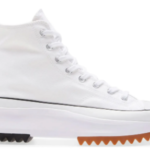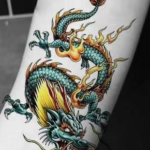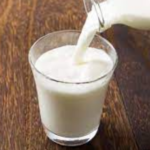Removing acne scars is possible but not easy. You’ve got to know the right treatment options to use. Before we get to the various remedies though, let’s have a quick recap. Acne is a skin disease that often affects the face, chest, and back.
Though there are treatment options for acne breakouts, the condition often has another bothersome side of causing skin scars. In this guide, we’ll discuss how to remove acne scars. Read on for the details…
If you’ve ever experienced acne in some form; mild, moderate, or severe, then you’re familiar with the associated scars. Managing these skin flaws can be very challenging especially considering that most of the available acne treatment options do not focus on clearing the associated scars.

Luckily, there are dedicated remedies that can be used to manage the acne aftermath. Here you’ll find detailed coverage of some proven treatment options for acne-related scars. They include medical, home-based/ natural remedies, & alternative remedies. To begin, let’s get to know the different types of acne scars.
Quick Read: Rheumatic Arthritis Causes, Symptoms and Treatment
Types of Acne Scars
There are 3 main types of skin scars associated with acne. They include:
i). Keloid scars
These types of scars are slightly bigger and thicker than hypertrophic scars. They normally have a red or brown appearance and are normally itchy or painful.
ii). Atrophic scars
These types of scars normally appear as skin indentations and are associated with a decreased synthesis of fibroblasts and skin collagen during the healing of acne spots.
iii. Hypertrophic scars
These are the opposite of atrophic scars. They appear as skin bumps and are associated with a significant increase in the synthesis of skin fibroblasts and collagen during the healing of acne wounds. That leads to raised skin scars.
With that being said, let’s get to the available treatment options for acne scars. We’ll classify them into 3 broad categories as follows:
- Alternative remedies
- Natural/ Home treatment options
- Medical treatment options
Now, let’s delve some more into the details of each of these methods. That way, it’ll be a lot easier to tell which option suits you best.
Quick Read: Acne symptoms and treatment
1. Alternative Remedies for Acne Scars
There are a couple of alternative remedies that may be used to rid your face of scars and spots related to acne. Luckily, most of these methods are available over the counter. Here are some of the most common ones:
This is a large class of chemical compounds that are related to vitamin A. According to recent research studies, retinoids have been found to induce epithelial cell regeneration. For this and other medical reasons, these compounds have found use in the removal of skin scars and inflammation.
Retinoids are also known to lighten the complexion of the skin. That comes in handy especially in removing the redness associated with acne scars.
Retinoids can be used as standalone products or as components of other skin products. Remember to use such products sparingly because excessive use has been found to predispose the skin to sunburns. That’s why it’s advisable to wear sunscreen and use skin moisturizers if you’re using retinoids on your skin.
Another very important class of chemicals that are commonly used in the cosmetics industry. Alpha hydroxy acids are used as chemical peels; a procedure that’s used to improve facial skin texture and tone by removing the outer layer of dead cells. Furthermore, AHAs can be used to reduce wrinkles and other signs of aging. These compounds have proved super effective in the management removal of skin scars.
Salicylic acid is a known skin exfoliant that has found use in the management of acne and related scars. This acid belongs to beta hydroxy acids and phenolic acids and is synthetically derived from salicin. Because of its unique exfoliative capacity, salicylic acid has found use in the management of various skin conditions, including acne scars.
Some people are allergic to salicylic acid. As such, you might want to consult your doctor before using skin products containing this compound. Check the product label to see if salicylic acid is one of the ingredients.
- Lactic acid
Lactic acid is a common active ingredient in many skin products. Besides being used as a component of scrubs, lactic acid has also been found to improve skin complexion around scarred areas. Before using any lactic acid skin product, it’s advisable that you consult a skin expert to advise on the suitability of such products for you.
Quick Read: 10 Amazing Health Benefits of Lavender Oil
2. Natural/ Home Treatment Options
A number of natural remedies have also been used in the management of acne symptoms. Note however that some of these acne treatment options may cause irritations and other hypersensitivity-related reactions. Besides, their efficacy for removing acne scars is not scientifically proven. Research some more before you give them a try.
Here are some common home remedies that may be used to remove skin scars:
- Aloe Vera soaps and gels
- Coconut oil
- Shea butter
- Baking soda
- Lemon juice
- Honey
The effectiveness of the home/ natural remedies isn’t scientifically proven and as such, might be a subjective analysis of particular users. Research more before using such products on your skin.
Quick Read: Anti-Dandruff Hair Oils for Women and Men
3. Medical Treatment for Acne Scars
There are countless medical treatment options for acne scars. Talk to your doctor about the best one for your skin. Here are some treatment procedures that can be used to remove scars from the skin.
- Steroid injections
Injectable corticosteroids have been found to be effective against acne scars. They’re often used in the management of keloid and hypertrophic skin scars.
- Dermal filling
This is a new medical technique for removing scars associated with acne. It entails the use of dermal fillers to improve the overall skin appearance. Four types of dermal fillers are currently in use. They include:
i). Adipose tissue fillers
ii). Soft tissue/ collagen-based fillers
iii). Commercial fillers e.g. polymethylmethacrylate, Poly-L-lactic acid, and Hyaluronic acid.
It’s worth noting that dermal filling is a temporary acne scar removal option that works best for atrophic scars. However, if you want a permanent option, be sure to discuss the same with your doctor.
- Microneedling method
Another awesome way to rid your face of acne scars. The procedure involves piercing the skin around scars with the help of a fine/ micro-needle. The import of the operation is to stimulate the skin to synthesize more collagen which then fills up the scarred region of the skin. Microneedling works for all types of skin scars but often has the best results in the removal of atrophic scars.
Quick Read: Best makeup Tips for Teenage Girls
This medical procedure makes use of laser light technology to remove the top layer of the skin. Laser skin treatment allows the younger skin beneath the scar to regenerate and replace the scarred tissue. It’s best suited for removing keloid and hypertrophic acne scars.























